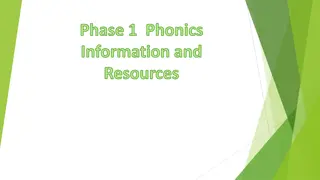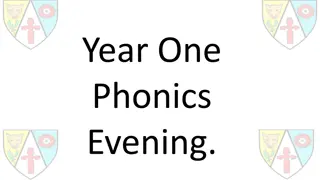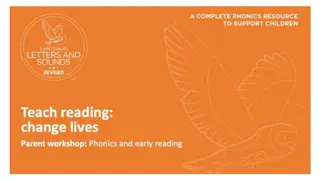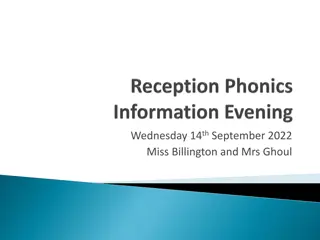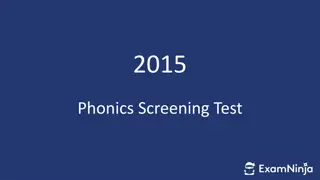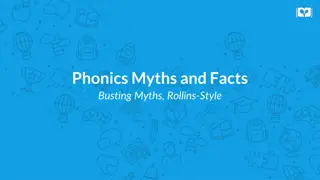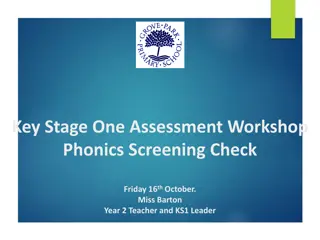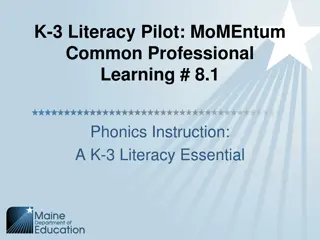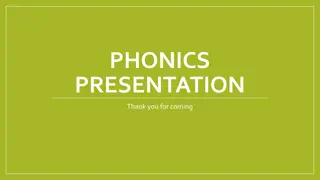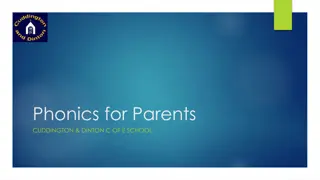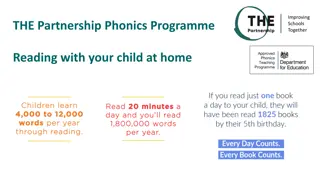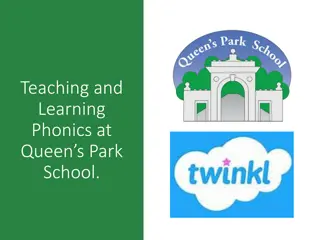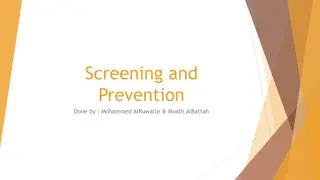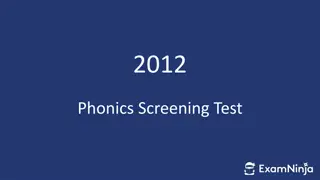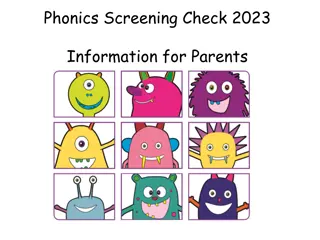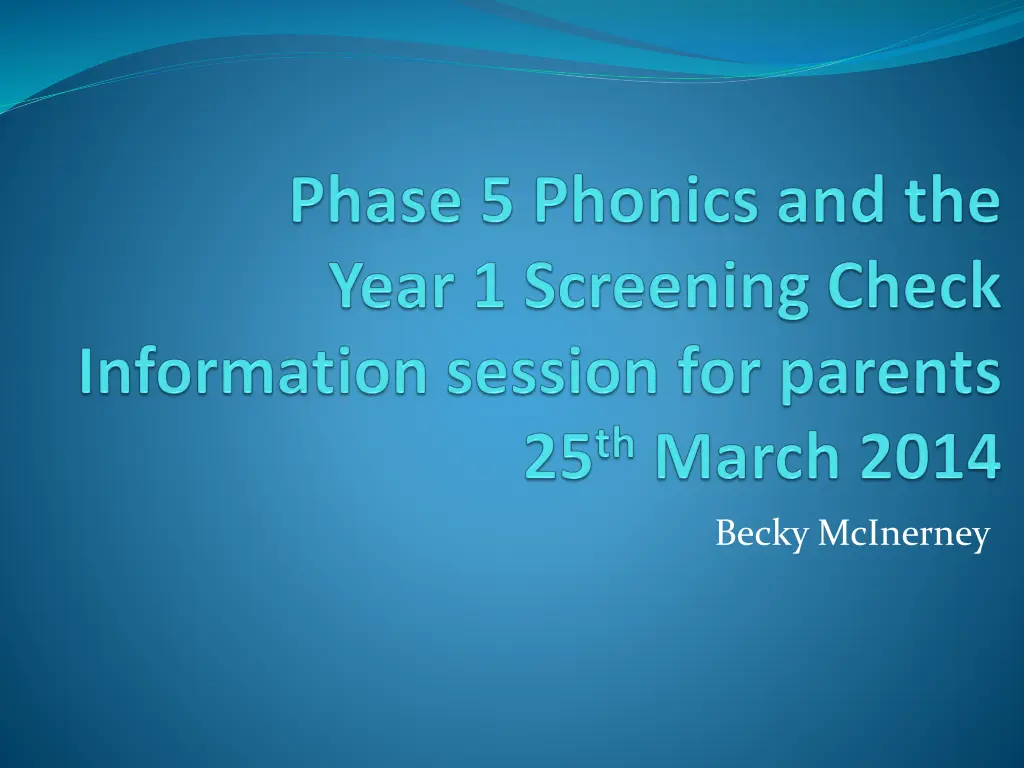
Phonics Teaching Strategies for Children: Images & Text Insights
Explore effective phonics teaching strategies for children through visual aids and informative text. Learn about phonemes, graphemes, high-frequency words, and more to enhance reading and spelling skills.
Download Presentation

Please find below an Image/Link to download the presentation.
The content on the website is provided AS IS for your information and personal use only. It may not be sold, licensed, or shared on other websites without obtaining consent from the author. If you encounter any issues during the download, it is possible that the publisher has removed the file from their server.
You are allowed to download the files provided on this website for personal or commercial use, subject to the condition that they are used lawfully. All files are the property of their respective owners.
The content on the website is provided AS IS for your information and personal use only. It may not be sold, licensed, or shared on other websites without obtaining consent from the author.
E N D
Presentation Transcript
Phonic terminology: some definitions A phoneme is the smallest unit of sound in a word A grapheme is the letter, or letters, representing a phoneme t ai igh 2
Phase Five Teaching children to recognise and use alternative ways of pronouncing the graphemes and spelling the phonemes already taught. 3
Same sound, different letters may make pain 4
Same letters, different sounds mean bread read 6
A Real Treat Tom was very happy. It was the weekend and he was off to the beach with his mum and dad, his puppy and baby Pete. Help me pack the green bag, said mum. We need sun cream and lots to eat. Tom got into his seat in the back of the car and the puppy got on his knee. Pete held his toy sheep. Off they went. Beep! Beep! At the end of the street there was a big truck. It had lost a wheel. Oh, no, said Tom. We ll be here for a week! Dad went to speak to the driver to see if he could help. 8
A Real Treat Tom was very happy. It was the weekend and he was off to the beach with his mum and dad, his puppy and baby Pete. Help me pack the green bag, said mum. We need sun cream and lots to eat. Tom got into his seat in the back of the car and the puppy got on his knee. Pete held his toy sheep. Off they went. Beep! Beep! At the end of the street there was a big truck. It had lost a wheel. Oh, no, said Tom. We ll be here for a week! Dad went to speak to the driver to see if he could help. 9
Reading and spelling high- frequency words Both the decodable and tricky high-frequency words need lots of practice so that children will be able to read them automatically as soon as possible. Handout - First 100 high-frequency (common) words
Practise reading two-syllable and three-syllable words Children learn to blend the phonemes in each syllable i.e. thirteen is split thir/teen th-ir t-ee-n
What is the phonics screening check? The phonics screening check is a new, statutory assessment for all children in Year 1. The phonics screening check will take place during the week commencing 16 June 2014. The phonics screening check comprises a list of 40 words that children read one-to-one with a teacher. There is no time limit but the phonics screening check would normally take between four and nine minutes for each child. The check will take place in a quiet area of the school.
What will the children be expected to do? Children will be asked to read words aloud. They will be told that they can sound out before trying to say the whole word if this helps them. The check is divided into 2 sections and the words become progressively more difficult, a previous check included: yop, queep, farm, truck, girst, flute, index, portrait... The focus of the check is to see which sounds the children know and how these can be put together or blended to read a word, therefore the children will be asked to read made up nonsense words THIS IS NOT A READING TEST
The phonics screening check will be constructed of 20 real words and 20 non-words. The non-words will be presented with a picture prompt (a picture of an imaginary creature) and children will be asked to name the type of creature.
What will the check look like? The check will begin with simple words and moves on to more complex words. There will be: Simple CVC words for example the non-word vap Words with consonant digraphs such as chill Words with vowel digraphs such as week or hooks Words with adjacent consonants such as start or non-words such as jound Words containing split digraphs such as phone or slide Words with alternative spellings of phonemes such day and trains Non-words that can be pronounced in alternative ways for example voo Two- syllable words such as dentist or starling
How will the data be used? The data will be used in the following ways: Individual children results will be made available to parents, so that parents are kept informed about their child s progress in developing word reading skills. School-level results will be recorded and made available to the school, the Local Authority and Ofsted on RaiseOnline for data analysis and monitoring and for use in inspections. National results will be reported to track standards over time. National and local authority results will be reported to allow schools to benchmark the performance of their children.
How can you help? Encourage your child to sound out when reading or writing. Focusing particularly on spotting more unusual sound patterns. For example cow Digraphs- 2 letters making one sound night Trigraphs- 3 letters making one sound Split digraphs- 2 vowels with a consonant in between spine - i_e Encourage your child to use their sound mat when writing. Children can practise their phonics by playing games online.
How can you help? REMEMBER: using phonics is not the only strategy needed to become a fluent reader. Please continue to read with your child each evening and encourage them to: Sound out and then blend the sounds Re-read to check it makes sense Use pictures for clues Ask and answer questions about the book And most importantly ENJOY READING!
Thank you for attending the workshop today! Questions Please complete an evaluation form before you leave.




